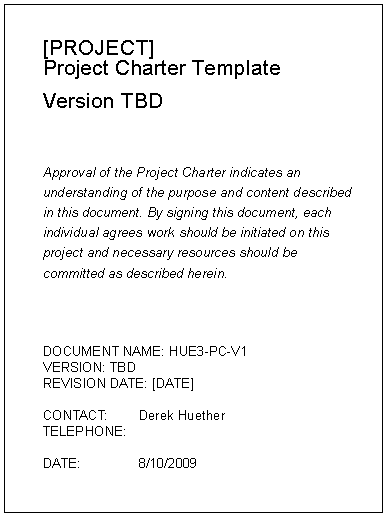Project Team Organization
Today I'm going to write about (and provide) a free Project Team Organization worksheet to complement the Project Charter Template so many have downloaded. Both files are free for download, modification, and distribution. [Team Organization Worksheet] [Project Charter Template] When using the Project Team Organization worksheet, note that there are 4 sections: Structure, Roles and Responsibilities, and a Responsibility Matrix, Project Facilities and Resources. I'm going to focus on the first three.
Step 1: Describe the organizational structure of the project team and stakeholders, preferably providing a graphical depiction (organization chart).
Step 2: Summarize roles and responsibilities for the project team and stakeholders identified in the project structure above.
Step 3: Complete the responsibility matrix for each of the project roles. As a graphical depiction of a more detailed perspective of responsibilities, the matrix should reflect by functional role the assigned responsibility for key milestones and activities.
Step 4: Describe the project's requirements for facilities and resources, such as office space, special facilities, computer equipment, office equipment, and support tools. Identify responsibilities for provisioning the specific items needed to support the project development environment. Hey, you're people need places to sit and equipment to get their work done.
With preliminary approval, copy these values into Section 3 of our free Project Charter Template. Upon Project Charter approval, apply the identified team members to activities in Microsoft Project or your selected Project Management application.
Another thing I would recommend is leverage the data from this worksheet in your Communications Management Plan. You've already identified people and their roles or responsibilities. The most important thing to remember is do what makes sense. This planning worksheet isn't required to do a Charter. It's supposed to make things easier for you and lower the risk of not knowing who is on your team and what they are responsible for.
[Team Organization Worksheet] [Project Charter Template]








 Though I haven't uploaded any new templates today, I did fix some broken links. Thank you PJ for bringing it to my attention. The
Though I haven't uploaded any new templates today, I did fix some broken links. Thank you PJ for bringing it to my attention. The 



